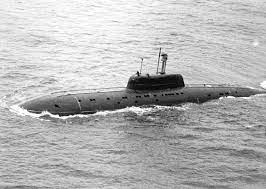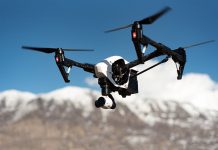
The Sierra-class submarines, born amidst the geopolitical tensions of the Cold War era, were a direct response from the Soviet Union to the formidable naval assets fielded by their American adversaries. This sparked a fierce competition, driving both sides to push the boundaries of military technology, resulting in significant advancements that continue to captivate engineers and analysts to this day. The Sierra series, powered by nuclear energy, remains a cornerstone of Russia’s contemporary naval capabilities.
When the U.S. Navy unveiled their potent Los Angeles and Seawolf-class submarines during the Cold War, it presented a clear challenge to Soviet engineers. Determined to assert their prowess in submarine warfare, Soviet designers embarked on a mission to establish a new standard in underwater combat.
The genesis of this endeavor can be traced back to the 1960s with the introduction of Project 661 “Anchar,” marking the world’s inaugural nuclear-powered cruise missile submarine with a titanium hull. This landmark vessel, dubbed the “Papa-class” submarine by NATO, laid the groundwork for subsequent innovations. Building upon this success, the Soviets leveraged the advantages of titanium in Projects 945 Barracuda and 945A Kondor, resulting in the formidable “Sierra I” and “Sierra II” submarines, respectively, as designated by NATO.
The strategic appeal of titanium lies in its transformative impact on submarine technology. Offering superior durability and reduced weight compared to steel, titanium enables submarines to operate stealthily and maneuver deftly even in the deepest waters. Despite its impressive capabilities, the adoption of titanium presents formidable challenges, including high costs and complex production processes.
Further distinguishing themselves, the Sierra-class submarines feature a distinctive design element—a single reactor configuration reminiscent of the innovative approach employed in their precursor, the Charlie-class cruise missile submarines. This unique feature underscores the relentless pursuit of technological excellence and strategic advantage by Soviet naval engineers.
The genesis of the Sierra II-Class submarines dates back to 1979 when the first vessel of this class was constructed at the Gorky shipyard. Over the following years, additional vessels underwent fitting at Severodvinsk, with the Carp being the first launched in 1983, followed by the commissioning of Kostroma in 1987. The fleet expanded further with the introduction of Nizhniy Novgorod in 1990 and Pskov in 1993, marking the augmentation of Project 945A’s capabilities.
Notable among the advancements in Sierra II-Class submarines is their increased size compared to their Sierra I predecessors, featuring a distinctive flat, square leading edge. These maritime behemoths are propelled by the OK-650 pressurized water reactor, a power source shared with the Sierra I-Class vessels.
Renowned for their formidable armaments, Sierra II submarines boast a diverse array of weapons systems, including the potent P-100 Oniks anti-ship cruise missiles, Type 96R Vodopad, and RPK-6 Vodopad anti-ship cruise missiles, as well as the formidable Type 40 torpedoes. Despite their significance within the Russian Navy’s arsenal, Sierra II-Class submarines remain shrouded in secrecy, with limited documented information available regarding their operational activities and firepower. However, a 2019 announcement by TASS provided insight into the vessels’ engagements, highlighting their participation in “scheduled tasks” in the Barents Sea. Notably, these activities included demanding torpedo exercises against surface targets, underscoring the submarines’ combat readiness and operational versatility. The involvement of nuclear-powered submarines from the Northern Fleet, specifically Nizhny Novgorod and Pskov, further emphasizes their critical role in naval operations.




